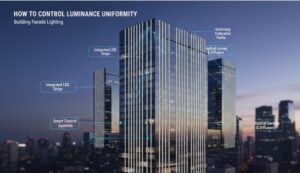Lighting technology has come a long way since the traditional incandescent bulbs. You might have encountered LED and metal halide lights when choosing lighting options for your home or workplace. These technologies have unique benefits and features, but which is better?
We all know LED technology is the latest trend and widely used for lighting. However, metal halide lights are also popular, especially for outdoor spaces like parking lots and stadiums. Let’s delve deeper and compare the two to determine which is better.
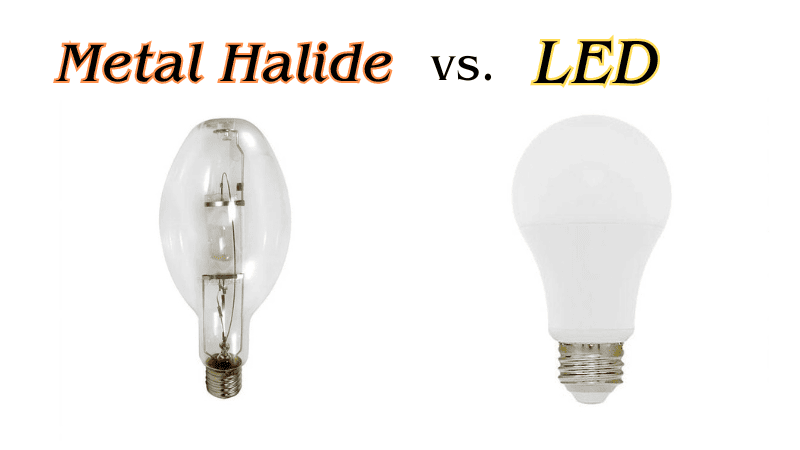
What Is Metal Halide Light?
Metal halide light is a high-intensity discharge (HID) lighting technology that produces bright white light. They contain a cocktail of metal halide gas and mercury vapor inside a sealed tube.
When you flick the switch, an electrical charge zaps across, lighting up the gas and creating that potent glow we all know. They’re brilliant for spaces that need much illumination, like stadiums or parking lots.
Pros of Metal Halide Light
- High-intensity brightness
- Ideal for large spaces
- Offers white light
Cons of Metal Halide Light
- High energy consumption
- Longer warm-up time
- Contains harmful gases
- Limited lifespan
Ask For Free Quote
Let us Respond Promptly for your Needs :)
What Is LED Light?
LED (Light Emitting Diode) light is a highly efficient and popular lighting technology that has taken the world by storm.
It is basically a two-lead semiconductor device that emits light when an appropriate voltage is applied to the leads. What’s more? Unlike traditional lighting methods, it can produce light of various colors without color filters.
So, why are people raving about LED lights? First, they’re incredibly energy efficient, consuming up to 90% less power than incandescent bulbs. That’s quite a saving on your electricity bill. However, no technology is perfect, and LEDs do have their shortcomings.
Pros of LED Light
- Energy-efficient
- Long lifespan
- Wide range of colors
Cons of LED Light
- More expensive initial cost
- Blue pollution
- It might fail under heat
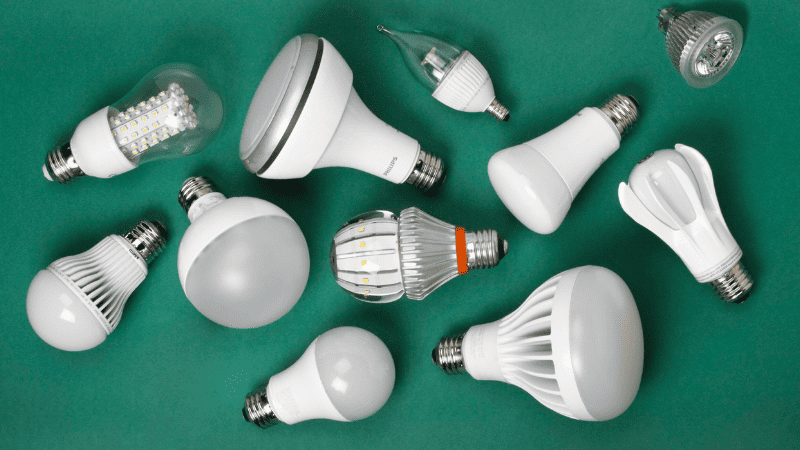
Are LED Lights Better than Metal Halides? Metal Halide Vs. LED Lights
Switching from metal halides to Light-emitting diodes is surely a smart move, as LEDs are more efficient, reliable, and better for the environment. Let’s compare both types of lights based on a few key factors:
1. Correlated Color Temperature
When we talk about Correlated Color Temperature (CCT), we’re referring to the color of the light emitted. It’s measured in degrees Kelvin (K), and the value determines whether the light appears warm (yellowish) or cool (bluish).
LED lights are the chameleons of the lighting world. They can produce a wide range of colors without the need for filters and can easily mimic the warm, cozy glow of an evening fire or the cool, bright white of a midday sun. So you can choose a CCT that suits your needs, whether creating an intimate setting or needing bright light for task-oriented spaces.
On the other hand, a typical metal halide bulb emits a bright white light. This makes them excellent for large outdoor areas where high visibility is crucial, like sports stadiums or parking lots. But they can’t compete with LED lights when it comes to versatility in color temperature. The nature of their design means the light tends toward the cooler side of the spectrum and doesn’t provide much variety.
2. Color Rendering Index (CRI)
The Color Rendering Index (CRI) measures a light source’s capacity to reveal the colors of various objects faithfully compared to a natural light source. Now, you might be thinking, how do LED and metal halide lights fare on the CRI scale?
Well, LED lights have a fantastic CRI, often over 80, making them a top pick when you want to display colors accurately. This aspect makes LED lights a great choice for display lighting or any other scenario where color accuracy is paramount.
On the other hand, metal halide fixture offers a CRI generally in the range of 65 to 90. This variation means that while they can provide decent color accuracy, they may not be as consistent as LED lights.
Now, onto foot candles, a somewhat old-school term that refers to how bright a light source is when you’re one foot away from it. Here’s how LED fixtures and metal halide lights compare.
Metal halides are the brighter light source, with an average of 15 to 20-foot candles per watt. However, LEDs can produce up to 40-foot candles per watt, making them more efficient if brightness is your main concern.
Ask For Free Quote
Let us Respond Promptly for your Needs :)
3. Efficacy (Lumens/Watt)
Efficacy in lighting is the luminous efficacy of a light source. It measures how well a light source produces visible light, expressed in lumens per watt (lm/W).
LEDs are the “fuel-efficient hybrids,” with efficacy reaching over 100 lm/W. That means you’re getting a lot of light output for your energy input. For example, a 10-watt LED light with an efficacy of 100 lm/W will give you 1000 lumens of light output.
Metal halide lights tend to have lower efficacies, usually around 65 to 115 lm/W. So, a 100-watt metal halide light with an average efficacy of 90 lm/W will produce about 9000 lumens. That’s a lot of light and more energy than LEDs.
To calculate the efficacy, you can use this simple formula:
Efficacy (lm/W) = Total lumens (lm) / Total Watts (W)
For example, you have the 100-watt high-bay light and want to know its efficacy. You take the total lumens of 9000 and divide it by 100 watts, giving you an efficacy of 90 lm/W.
4. Heat Emissions
Let’s turn up the heat and talk about heat emissions. You know how sometimes when you touch a light bulb, it’s too hot? That’s because most traditional light sources, like metal halide bulbs, tend to produce a substantial amount of heat. They actually lose a fair bit of their energy as heat, which isn’t very efficient, right?
Now, how about LEDs? The story is quite different here. LED lights are much cooler to the touch. They produce some heat but significantly less than their metal halide counterparts. That’s because they’re just better at converting energy into light rather than heat. So, not only are LEDs more efficient, but they are also safer, reducing the risk of burns or fires.
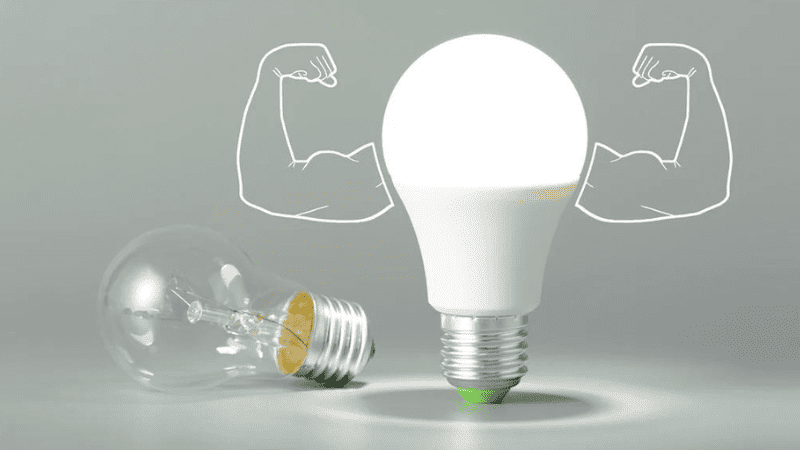
5. Life Span
One of the strong suits of LED lights is that they tend to keep glowing for ages. These little powerhouses can last for a whopping 30,000 to 50,000 hours. That’s like leaving them on continuously for more than 5 years! So, if you’re looking for a light source that you can set and forget, LEDs are your go-to.
However, metal halide lamps don’t quite measure up in the longevity stakes. On average, they’ll keep shining for about 6,000 to 15,000 hours. Not terrible by any means, but certainly not on par with their LED counterparts. So overall, while both types of lights have their applications, if it’s a long life span you’re after, LED lights steal the show.
6. Cost
The discussion about LED and metal halide bulbs would be incomplete without considering the cost angle. LEDs, being the technological wonders they are, have a higher initial price tag than traditional metal halide lights.
When it comes to running and maintenance costs, LED lights are the clear winners. Why? Firstly, the longer lifespan of LEDs means you don’t have to replace them as often, saving you money on replacement costs. They also use less power to produce the same amount of light, translating to lower energy bills.
Besides that, let’s not forget the maintenance bit. Replacing a bulb may not seem like a big deal, but imagine doing it for high ceiling lights or streetlights. It’s not only the bulb cost but also the labor and the equipment needed for the replacement. With their long life, LEDs spare you from this hassle and expense.
On the other hand, while cheaper upfront, metal halide lights could have you shell out more in the long run. They use more energy, need more frequent replacements, and come with added maintenance headaches.
So, while the initial price of LEDs might make you gulp, they can be a more cost-effective choice over time. It’s a case of ‘spend a bit more now, save a lot more later.’ So, when weighing the costs, consider the immediate price and the long-term savings.
Finally, summarize by listing a table comparing the advantages and disadvantages of these two types of lighting fixtures:
| Criteria | LED | Metal Halide |
|---|---|---|
| Energy Efficiency | Generally higher | Lower |
| Warm Up Period | Instantaneous | Requires warm-up time (15 to 20 min) |
| Light Spread | Directional or wide (180-degrees) | Omnidirectional (360-degrees) |
| Dimmable Options | YES | Limited or may require additional equipment |
| Foot Candles | 50+ Lumens/Watt | Less than 30 Lumes/Watt |
| Initial Cost | Higher initial cost | Lower initial cost |
| Operating Hours | Longer lifespan (50,000 to 100,000) | Shorter lifespan (6,000 to 15,000) |
| Shock Resistance | Resistant to shocks and vibrations | Sensitive to shocks and vibrations |
Future Development Trends of LED Lighting
As LED lighting technology advances, it’s not only transforming the way we illuminate spaces but also reshaping the very essence of our environments. This section explores the emerging trends in LED lighting.
Energy Efficiency and Sustainability
As we stride into the future, LED lighting is expected to continue its trend toward greater energy efficiency and sustainability. With climate change knocking at our door, the importance of reducing energy consumption can’t be overstated.
Advancements in Smart Lighting
Another exciting frontier is smart lighting. Imagine lights that adjust their color and intensity based on the time of day or your mood. Pretty cool, right? Well, that’s the direction we’re headed. Advances in IoT and AI technologies will likely make smart, connected LED lighting systems more commonplace, enhancing our lives in unimaginable ways.
Innovative Applications
Lastly, let’s not forget the innovative applications of LEDs. From urban farming to medical treatments, the potential uses of LED lights are vast and varied. So, stay tuned to witness more LED-driven innovations, lighting our path into the future!
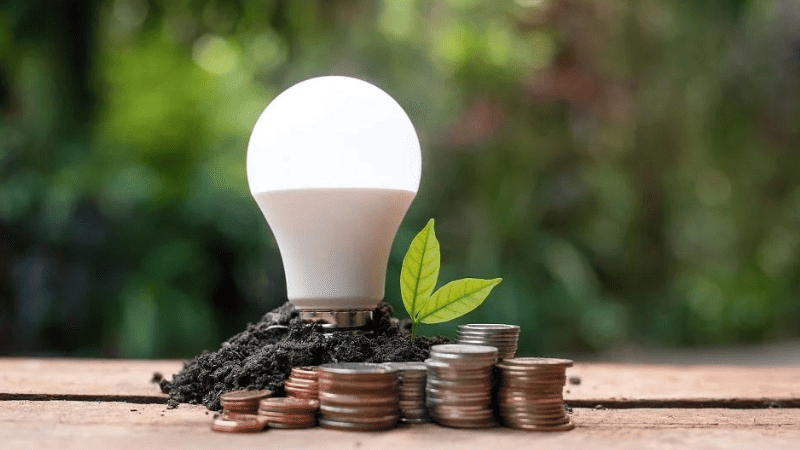
Conclusion
LED lights to outshine their metal halide counterparts in terms of efficiency, heat emissions, lifespan, and cost-effectiveness. LEDs are poised to become integral to our energy efficiency and sustainability drive.
From smart lighting solutions to innovative applications, the future of lighting rests firmly in the capable hands of LEDs. Embracing LED technology today can lead to a brighter, more efficient, and sustainable future.
Begin Your Transition to LED Lighting Solutions with R&C Lighting
If you’re ready to take the leap and switch to energy-efficient LED lighting solutions, you should consider a few things:
- Assess your current lighting needs and requirements. This will help determine the types of LED lights that will work best for your space.
- Consider the initial cost of LEDs versus their long-term cost savings. Remember, it’s not just about the upfront price but also the long-term benefits and savings.
- Consider any potential rebates or incentives for switching to energy-efficient lighting. These can significantly reduce your costs and make the transition even more cost-effective.
- Don’t forget to consult a reputable LED lighting supplier like R&C Lighting for expert guidance and assistance with your transition.
R&C Lighting is one of China’s best custom lighting OEM manufacturers specializing in LED lighting solutions. We offer a wide range of high-quality, energy-efficient LED lighting products for residential, commercial, and industrial use. Contact us now!

